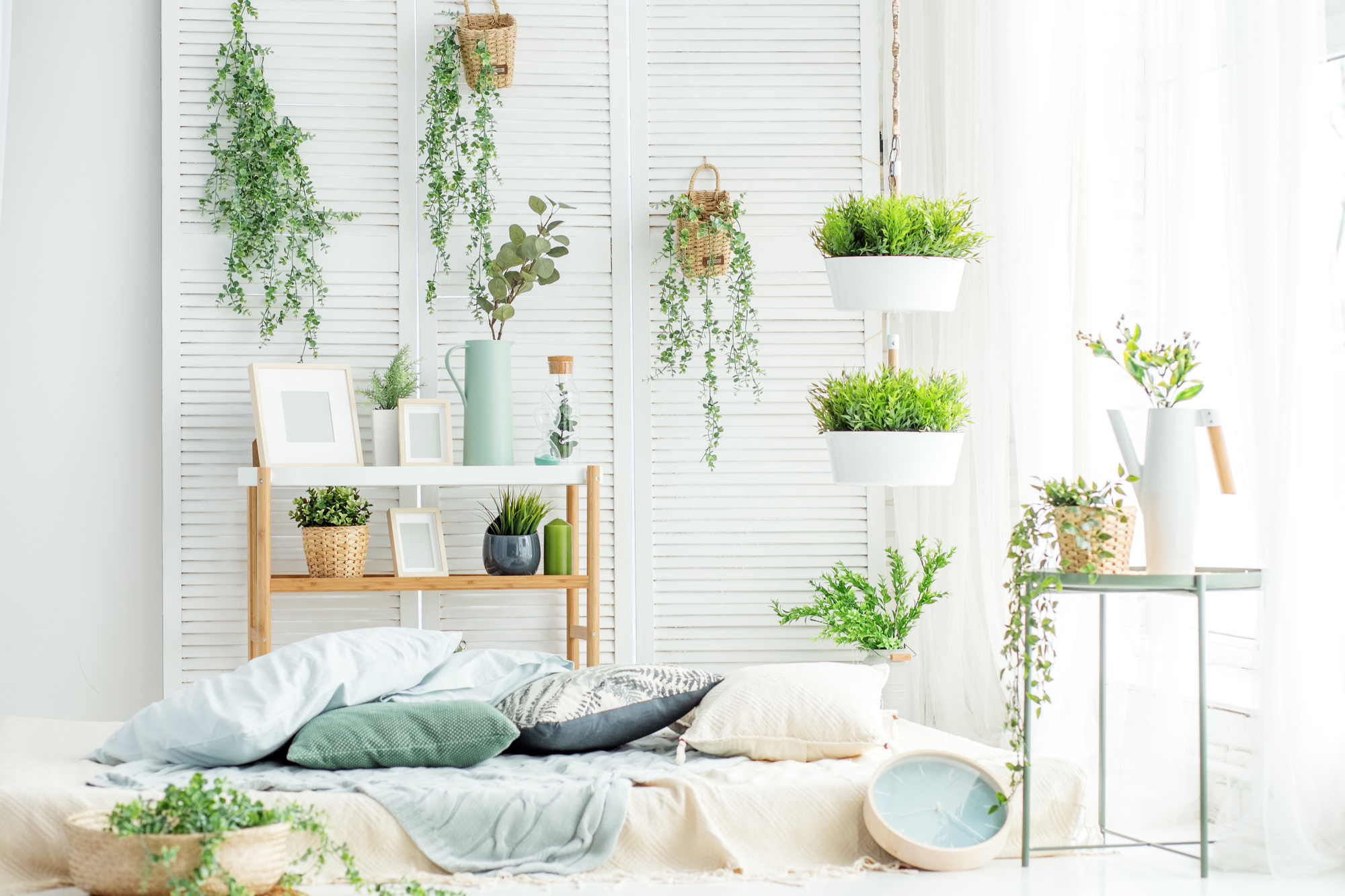Not only do indoor plants brighten up a room and provide something pretty to look at, but they also come with a variety of health benefits.
Most notably, indoor plants help to purify the air, bring relief to those who suffer from asthma or other respiratory conditions. Plants have also been shown to lower your stress levels and promote better mental health.
So what’s holding you back from adding some indoor plants to your decor? Don’t let your lack of plant care knowledge prevent you from all the benefits plants have to offer.
Keep reading to discover the top mistakes to avoid in order to master your indoor plant care.
Table of Contents
1. Not Knowing Your Specific Plants
The most important rule of house plant care is knowing what plants you own.
Once you know what your plant types are, you know can easily research exactly how to care for them. You can find out how much light and water they need along with what kind of soil they thrive in. A simple internet search will help you discover everything you need to know.
The biggest mistake that you can make is assuming you know what your plants are. If a friend gifts you a plant, don’t take their word for it. Enter the plant’s characteristics into a plant finder database to find out exactly what you’re caring for.
How you care for tropical indoor plants like the monstera deliciosa will differ from how you care for a low-maintenance spider ivy.
2. Keeping It Rootbound
While you’re probably aware of the fact that plants grow, it may not occur to you that this means they’ll need to be repotted from time to time.
When a plant becomes rootbound, it means that the roots are taking up all the possible space allotted to them. These roots now have no room to grow, which can cause your plant to become unhealthy.
If you notice your plant has gotten larger or is suddenly turning yellow or losing leaves, it’s time to re-pot. Simply find a larger pot and transfer your plant to its new home. Make sure to add in more nutrient-rich soil to account for the extra space.
3. Overwatering Your Plants
Most inexperienced plant owners fear that they aren’t watering their plants enough. But more water doesn’t automatically create a healthy and happy plant. Instead, you may find yourself overwatering and drowning your plants.
Very few indoor plants require watering every day. In fact, a good rule of thumb is that most of your indoor plants only need watered once a week.
When you go to water your plants, test the dampness of the soil with your fingers. Is the soil damp several inches down? If so, your plant still has enough moisture and doesn’t need watering.
4. Exposure to Extreme Temps
You might think that since your plants are indoors, they are safe from extreme temperatures, but that’s not true.
Most indoor plants thrive in temperatures between 65 and 75 degrees Fahrenheit.
This means that you should be aware of your plant’s location. In the middle of the summer, sitting your plant directly in front of a window could be too warm. And your plant can easily become too cold in front of a drafty window or near a frequently opened door in the winter. The best option for rooms with extreme temperature is to have a plant humidifier.
5. Poor Soil Quality
If you want your plant to truly thrive, you need to pay special attention to its soil quality.
First, you need to figure out what type of soil best suits your plant. For example, succulents need fast-drying soil while most other plants need moisture-retaining soil.
Instead of going outside and adding some backyard dirt into a pot, buy a soilless potting mix. This will ensure that the mixture has all the nutrients needed for indoor plants.
6. Not Cleaning Your Plant’s Leaves
Many people are unaware of the fact that indoor plants need to be cleaned.
When plants grow outdoors, they have both rain and wind to help keep their leaves clean. But, when your plants are inside, they collect dust. This is especially true if you water the soil instead of the plant itself.
This layer of dust and dirt prevents your plant from absorbing the sunlight it needs to grow. Every time you water your plants, take a rag and wipe down its leaves.
7. Incorrect Lighting Situation
Just like plants have different watering needs, each plant requires a specific lighting situation.
Some plants need direct light to thrive, while others need indirect light. Placing your plant in the wrong location can kill them.
If you see that your plant is growing towards a window or light source, this is a sign that they are yearning for light. Change their location so they no longer have to grow a certain way to get the nutrients they crave.
8. Letting Them Fend For Themselves
Unless you have fake plants, you should never leave your plants to fend for themselves.
Think about how you arrange care for your pets when you go away for an extended period of time. You probably drop them off with a boarding service or hire a friend to take care of them. The same concept applies to your plants!
When you’re away from home, drop them off at a friend’s house so they can get the care they need. Or, ask a friend to stop by to water and check up on your plants. You never want to come home from an extended trip to dead or dying plants.
Indoor Plant Care Is Easy with the Right Info
Avoiding these eight mistakes will help improve your indoor plant care.
The most important tip to remember is knowing the type of plants you have. Once you know the plant type, you can research the exact care they need to prosper. With a little work, you can transform your home into a greenhouse.
Once you’ve conquered your indoor plants, head over to the Backyard section of this site to learn how to care for your outdoor plants.


















